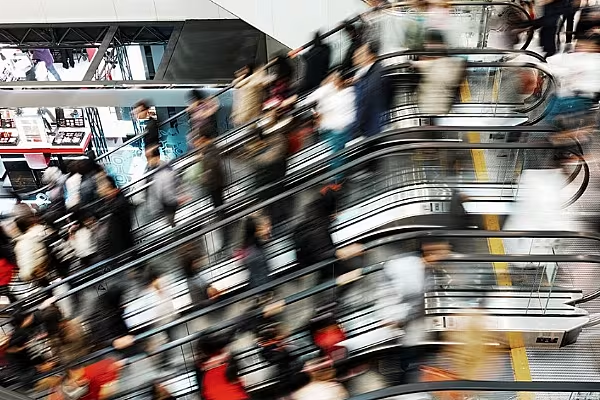The competitive nature of retail means that many established operators have been slow to react to the rapid pace of change in the sector – sometimes with dire consequences.
Thus far, the grocery industry has not seen the same rate of attrition as other retail sectors – with established retailers like House of Fraser, Maplin and Toys R Us among the main casualties.
But given the growth of e-commerce powerhouses such as Amazon and Alibaba, coupled with increased demand for seamless omnichannel services, few retailers can claim to be 100% assured of their long-term viability.
Targeted Approach
With this in mind, ESM recently caught up with Marc-André Kamel, partner, and Suzanne Tager, global practice senior director at Bain & Company's Retail practice, to explore how retailers can best position themselves to flourish in a changing retail environment.
As they explain, the challenge with an Amazon or Alibaba is not necessarily one of direct competition, but rather how both have influenced the customer mindset.
"Even if you are not directly competing with them, Amazon has raised consumer expectations across the board," says Tager. "Just look at what they have done with delivery – 10 to 15 years ago, you would have been pretty happy with delivery within five working days. Now, that's absolutely unheard of. Customer expectations around retail, speed and transparency of service have been completely reset."
"These standards then become the new normal right across retail," Kamel adds. "Even in luxury. Let's say you're a customer that buys a €4,000 handbag from one of the big luxury brands, with a one or two day delivery option. You expect a certain level of service. The next day, in the quiet of your living room, you might order some staplers from Amazon, for €10 or so, and they arrive within hours.
"That fundamentally changes your expectations – why should something you pay €10 for offer better service levels than something you pay €4,000 for?"
As he explains, just as retailers may not have anticipated how Amazon would change the game when it comes to delivery, there are likely to be further tweaks to the retail environment that could similarly have a groundbreaking effect.
"Retailers should really be tingling about the models that nobody is anticipating," he says. "Three years ago, nobody expected the the retail industry to be where it is today. Who's to say that it won't change even more in the next three years?"
Retailer Archetypes
Bain & Company has outlined seven different retail models that most retailers fall into; five of which are likely to continue to thrive. These include:
Ecosystem Players: Retailers that build one-stop shops for consumers, similar to how Amazon has been able to penetrate most aspects of our daily lives. These retailers offer a 'sticky' customer experience that others don't (or can't compete with), although such is the level of investment required, they are a somewhat exclusive club.
Scale Fighters: This includes retailers with enough scale to bankroll their own omnichannel and data-analytics capabilities, backed by strong local positioning (most scale fighters hold either number one or two position in their markets). They have the opportunity to grow both organically and through M&A, and are strategic enough to move fast to embrace new innovations.
"Not that many retailers can claim to be 'scale fighters', but those that do represent a significant chunk of sales – the likes of Tesco, Kroger, Carrefour," says Kamel. "They have reduced their costs and streamlined their operations enough to enable them to tackle the likes of Amazon and Alibaba, plus they have local leadership positions to support this."
Value Champions: While this category includes traditional value players such as Aldi, Lidl or Primark, it also includes those that are passionate about their customer's needs, creating a bespoke, highly valued experience that shoppers can't get elsewhere.
"We always talk about the hard discounters, but take a retailer like Leclerc in France," says Kamel. "It holds a leadership position not because its the cheapest, but because it has the most tailored offering for its shopper base. It's never deviated, or tried to be something it isn't, whereas all its competitors have changed their offering over the years."
Hitchhikers: This category features retailers that ave distinctive capabilities in areas such as design and product development. However, they lack the absolute scale required to keep pace with the latest developments in the sector, leading them to partner, or in this case 'hitchhike' with other companies.
"In many cases, Hitchhikers have a really strong value proposition that consumers appreciate," says Tager. "What they lack is scale. Many might resist partnering with other brands and continuing on their own, but if they can't get the scale, they'll always be at the mercy of other brands, or a target for a potential takeover down the line."
Regional Gems: Every market has them; retailers with deep personal connections to their customer base, and a local knowledge that an international player can only dream of. Customer relationship management is a key tool in these retailers' arsenals, and while they aren't impregnable, provided they keep investing in their customer proposition, they should be able to retain their market position.
"Regional Gems tend not to be the biggest retailers, but because they have such proximity with the shopper, they have been able to stay alive," says Kamel. "Harrods would be a good example."
Challenged Models
At the same time, however, Bain & Company has also identified two archetypes that most retailers would prefer not to fall into:
Legacy Laggards: These include once-mighty businesses that have fallen on harder times as they have struggled to adapt to market changes. While they may continue to hit short-term profit targets, this is often at the cost of closing stores, downsizing staff numbers, and aggressively cutting costs. In short, they are keeping the engine on the track – just – but there's little room for forward-thinking innovation.
"A lot of Legacy Laggards lack the capabilities, or in many cases, the time, to invest in ways to grow the business," says Kamel. "They are under pressure to continue to maintain earnings for each quarterly report, to maintain profitability. But at the same time, they are doing nothing to grow the business.
"With this situation, there's usually an all-too familiar ending – they see their value decline so much that they are taken over by another, established player, or they close altogether."
Exciting but Unsustainable Innovators: This final grouping often generate positive headlines due to their eye-catching and often digitally-powered business models. But in many cases, they lack the sufficient profit engine to support their ongoing investments.
Most retailers in this final grouping will be acquired before they can reach sustained profitability, such as Jet.com, which was taken over by Walmart in 2016. Others, however, will reposition enough to achieve scale in other areas; online grocer Ocado has been able to drive profitability through adopting a B2B approach with its proprietary software, rather than as an online grocer.
Driving Success
So what approach should retailers take – particularly those that find themselves in the latter two categories, particularly the Legacy Laggards?
"We're not saying any particular retailer is 'condemned'; they all still have a chance to succeed," says Kamel. "But the first objective should be to develop a source of differentiation and invest behind that. You need to obsess over your customers – too many retailers are coming from an age in which they were all about products and price negotiation, and not about creativity or experience. Data analytics can help leverage how to make better decisions and focus on the things that are really important.
"At the same time, retailers need to speed up the rate at which they innovate," he adds. "If a project takes two years to implement, it's over before it's even begun. You need to accelerate your timelines – finish a design in weeks, not months, and finish the implementation within a year. Otherwise you might get left behind."
For more information, or to read the full report, log on to www.bain.com
© 2019 European Supermarket Magazine – your source for the latest retail news. Article by Stephen Wynne-Jones. Click subscribe to sign up to ESM: European Supermarket Magazine.














